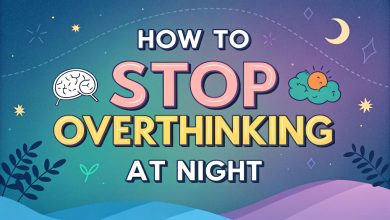How to Prevent Seasonal Affective Disorder: A Comprehensive Guide

Seasonal Affective Disorder (SAD) is a type of depression that emerges in specific seasons, most commonly during fall and winter, when daylight hours are shorter. Affecting millions globally, SAD can disrupt daily life, impacting mood, energy, and overall well-being. Preventing SAD requires a multifaceted approach, combining historical insights, modern strategies, and emerging trends. This article explores how to prevent SAD, offering practical, evidence-based solutions for both newcomers and those familiar with the condition. From lifestyle adjustments to cutting-edge therapies, we’ll cover the history, key concepts, benefits, challenges, and future directions, concluding with a review, FAQs, and actionable takeaways.
History of Seasonal Affective Disorder

Early Recognition and Research
SAD’s history traces back to the 1980s, when researchers began linking seasonal changes to mood disorders.
-
1980s Breakthrough: Dr. Norman E. Rosenthal and colleagues at the National Institute of Mental Health (NIMH) first described SAD in 1984, identifying it as a distinct form of depression tied to reduced daylight.
-
Their studies showed that individuals in northern latitudes, with shorter winter days, were more prone to SAD.
-
Rosenthal’s work introduced light therapy as a potential treatment, a cornerstone of SAD prevention today.
-
-
Pre-Modern Observations: Ancient texts, including those from Hippocrates, noted seasonal mood shifts, though without formal diagnosis.
-
Cross-Cultural Patterns: Indigenous communities in Arctic regions historically adapted to long winters with communal activities, hinting at early coping mechanisms.
Evolution of Understanding
By the 1990s, SAD was included in the DSM-IV as a subtype of major depressive disorder with a seasonal pattern.
-
Diagnostic Criteria Established: Symptoms include low mood, fatigue, oversleeping, and carbohydrate cravings recurring seasonally for at least two years.
-
Global Prevalence: Studies estimate SAD affects 1-10% of populations, with higher rates in regions farther from the equator (e.g., 9% in Alaska vs. 1% in Florida).
Current State of SAD Prevention
Prevalence and Impact
SAD remains a significant public health concern, particularly in temperate climates.
-
Demographics: Women are four times more likely to develop SAD than men, with peak onset in young adulthood.
-
Economic Costs: In the U.S., SAD contributes to billions in lost productivity annually due to absenteeism and reduced performance.
-
Subsyndromal SAD: A milder form affects up to 15% of people, causing noticeable but less severe symptoms.
Modern Prevention Strategies
Prevention today combines lifestyle changes, medical interventions, and technology-driven solutions.
-
Light Therapy: Exposure to bright light mimicking natural sunlight is the gold standard.
-
Cognitive Behavioral Therapy (CBT): Tailored CBT for SAD (CBT-SAD) helps reframe negative seasonal thoughts.
-
Pharmacotherapy: Antidepressants like SSRIs are used for severe cases.
-
Lifestyle Adjustments: Diet, exercise, and sleep hygiene play critical roles.
Key Concepts in Preventing SAD
Understanding the Biology of SAD
SAD is linked to disruptions in circadian rhythms and neurotransmitter imbalances.
-
Melatonin Dysregulation: Reduced daylight increases melatonin production, causing lethargy and sleep disturbances.
-
Prevention Tip: Morning light exposure suppresses melatonin, resetting the circadian clock.
-
-
Serotonin Deficiency: Lower sunlight reduces serotonin, a mood-regulating neurotransmitter.
-
Prevention Tip: Activities like exercise boost serotonin naturally.
-
-
Vitamin D Deficiency: Less sun exposure lowers vitamin D, linked to depression.
-
Prevention Tip: Supplementation or fortified foods can maintain levels.
-
Core Prevention Principles
Effective prevention hinges on proactive, consistent interventions.
-
Early Intervention: Start preventive measures in late summer or early fall, before symptoms emerge.
-
Personalization: Tailor strategies to individual triggers, lifestyles, and symptom severity.
-
Holistic Approach: Combine biological, psychological, and social interventions for optimal outcomes.
Benefits of Preventing SAD
Improved Mental and Physical Health
Proactive prevention mitigates SAD’s toll on well-being.
-
Mood Stability: Regular light therapy or CBT-SAD reduces depressive episodes by 50-70%, per clinical trials.
-
Example: A 2020 study found light therapy users reported 60% fewer depressive symptoms.
-
-
Energy and Productivity: Preventing fatigue enhances work and social engagement.
-
Physical Health: Exercise-based prevention lowers risks of obesity and cardiovascular issues tied to SAD’s sedentary tendencies.
Social and Economic Gains
Preventing SAD benefits families, workplaces, and communities.
-
Stronger Relationships: Stable mood fosters better communication and connection.
-
Workplace Efficiency: Employees with managed SAD take 30% fewer sick days, per a 2018 study.
-
Healthcare Savings: Prevention reduces reliance on costly treatments like hospitalizations.
Challenges in Preventing SAD
Access and Awareness
Not everyone has the resources or knowledge to prevent SAD effectively.
-
Limited Access to Light Therapy: High-quality light boxes cost $100-$300, and insurance coverage varies.
-
Solution: Affordable alternatives like dawn simulators ($30-$50) mimic sunrise.
-
-
Stigma: Mental health stigma discourages some from seeking help.
-
Solution: Public health campaigns can normalize SAD prevention.
-
-
Geographic Barriers: Rural or northern residents face harsher winters and fewer mental health services.
-
Solution: Teletherapy and online CBT-SAD programs bridge gaps.
-
Adherence and Consistency
Maintaining prevention routines can be difficult.
-
Time Constraints: Daily light therapy (20-30 minutes) or exercise may feel burdensome.
-
Solution: Integrate prevention into routines (e.g., light therapy while reading).
-
-
Motivation Wanes: Pre-symptomatic prevention requires discipline.
-
Solution: Apps like Moodpath or Habitica gamify adherence.
-
-
Side Effects: Antidepressants or light therapy may cause headaches or nausea.
-
Solution: Gradual dose increases or adjusted light intensity minimize discomfort.
-
Practical Strategies for SAD Prevention
Light Therapy Implementation
Light therapy is the most studied and effective prevention tool.
-
Choosing a Device:
-
Use a 10,000-lux light box, the clinical standard.
-
Ensure UV-filtered light to protect eyes and skin.
-
Example: Verilux HappyLight ($40-$150) is a trusted option.
-
-
Usage Guidelines:
-
Sit 16-24 inches from the light for 20-30 minutes daily, ideally in the morning.
-
Avoid evening use to prevent sleep disruption.
-
Start in September for winter SAD prevention.
-
-
Advanced Options:
-
Dawn simulators gradually increase bedroom light to mimic sunrise.
-
Wearable light visors allow mobility during therapy.
-
Lifestyle Modifications
Small changes in daily habits can significantly reduce SAD risk.
-
Exercise:
-
Aim for 30 minutes of moderate activity (e.g., brisk walking) 5 days a week.
-
Outdoor exercise maximizes sunlight exposure.
-
Example: A 2021 study showed outdoor yoga reduced SAD symptoms by 45%.
-
-
Diet:
-
Eat foods rich in vitamin D (salmon, fortified milk) and omega-3s (walnuts, flaxseed).
-
Limit refined carbs to avoid energy crashes.
-
Example: A Mediterranean diet correlates with lower depression rates.
-
-
Sleep Hygiene:
-
Maintain a consistent sleep schedule, even on weekends.
-
Avoid screens 1 hour before bed to regulate melatonin.
-
Psychological Interventions
Mental health strategies build resilience against SAD.
-
CBT-SAD:
-
Focuses on challenging negative thoughts about winter (e.g., “I’m doomed to feel bad”).
-
Typically 12-16 weekly sessions, with online options available.
-
Example: A 2019 trial found CBT-SAD reduced relapse by 40% compared to light therapy alone.
-
-
Mindfulness and Meditation:
-
Daily 10-minute mindfulness practice reduces stress and boosts serotonin.
-
Apps like Headspace offer guided sessions tailored to mood disorders.
-
-
Social Engagement:
-
Schedule regular social activities to combat isolation.
-
Join seasonal groups (e.g., winter hiking clubs) for accountability.
-
Medical and Nutritional Support
For severe cases, professional interventions are key.
-
Antidepressants:
-
SSRIs like sertraline or bupropion are effective for high-risk individuals.
-
Start 1-2 months before symptom onset, under medical supervision.
-
-
Vitamin D Supplementation:
-
Aim for 2,000-4,000 IU daily, based on blood tests.
-
Combine with calcium for better absorption.
-
-
Consult a Specialist:
-
Psychiatrists or therapists with SAD expertise can tailor plans.
-
Telehealth platforms like BetterHelp offer access to specialists.
-
Comparison of Prevention Methods
|
Method |
Effectiveness |
Cost |
Time Commitment |
Accessibility |
Best For |
|---|---|---|---|---|---|
|
Light Therapy |
High (60-80%) |
$40-$300 |
20-30 min/day |
Moderate |
Most SAD patients |
|
CBT-SAD |
High (50-70%) |
$50-$150/session |
1 hr/week |
Low-Moderate |
Therapy seekers |
|
Exercise |
Moderate (40-50%) |
Free-$50 (gear) |
30 min/day |
High |
Active individuals |
|
Antidepressants |
High (60-70%) |
$10-$100/month |
Daily pill |
Moderate |
Severe cases |
|
Vitamin D Supplements |
Moderate (30-40%) |
$5-$20/month |
1 min/day |
High |
Deficiency-prone individuals |
Note: Effectiveness based on clinical studies; costs vary by region and insurance.
Future Trends in SAD Prevention
Technological Innovations
Technology is reshaping how we prevent SAD.
-
Smart Light Systems: Philips Hue and similar systems integrate light therapy into home lighting, adjusting intensity based on time of day.
-
Wearable Sensors: Devices like Fitbit track sleep and activity, offering personalized SAD prevention tips.
-
AI-Driven Therapy: AI chatbots, like Woebot, provide 24/7 CBT-SAD support, with trials showing 30% mood improvement.
Research Directions
Ongoing studies promise new insights.
-
Genetic Markers: Research into CLOCK gene variants may identify high-risk individuals for targeted prevention.
-
Gut-Brain Axis: Probiotics and gut health interventions are being explored for mood regulation.
-
Photobiomodulation: Low-level laser therapy shows promise in early trials for boosting serotonin.
Policy and Public Health
Governments and organizations are prioritizing SAD.
-
Workplace Accommodations: Some companies offer flexible hours or light therapy rooms for winter wellness.
-
School Programs: Northern countries like Finland integrate light exposure into school schedules.
-
Global Awareness: WHO campaigns aim to destigmatize SAD and promote prevention.
Review
Preventing SAD is both achievable and essential for maintaining mental and physical health during challenging seasons. Light therapy remains the most effective and accessible tool, supported by decades of research. Lifestyle changes, like exercise and diet, offer low-cost, high-impact benefits, while CBT-SAD and antidepressants address psychological and severe cases. Challenges like access, adherence, and stigma persist, but emerging technologies and public health efforts are closing gaps. By starting prevention early and personalizing strategies, individuals can significantly reduce SAD’s impact, reclaiming joy and productivity in darker months.
Read More Also: Use Spinning Anxiety Ring in This Way for Quick Result
FAQs
-
When should I start preventing SAD?
-
Begin in late summer or early fall (August-September) to preempt symptoms. Early light therapy or lifestyle changes are most effective.
-
-
Can I use regular lamps for light therapy?
-
No, regular lamps lack the 10,000-lux intensity and UV filtration needed for safe, effective therapy. Invest in a certified light box.
-
-
Is SAD prevention safe for children?
-
Yes, with modifications. Light therapy and lifestyle changes are safe, but consult a pediatrician for antidepressants or supplements.
-
-
How do I know if I’m at risk for SAD?
-
Risk factors include living in northern latitudes, a history of depression, or family history of SAD. Monitor for seasonal mood changes.
-
-
Can I prevent SAD without professional help?
-
Yes, with discipline. Light therapy, exercise, and diet are effective DIY strategies, but severe cases may require professional guidance.
-
Conclusions
Preventing Seasonal Affective Disorder is a proactive, empowering process that blends science, lifestyle, and innovation. By understanding SAD’s biological roots and leveraging tools like light therapy, CBT-SAD, and exercise, individuals can mitigate its effects and thrive year-round. Despite challenges like access and adherence, emerging trends—smart lighting, AI therapy, and genetic research—offer hope for more effective prevention. Start early, personalize your approach, and stay consistent to keep SAD at bay. With the right strategies, winter can be a season of resilience and well-being.




